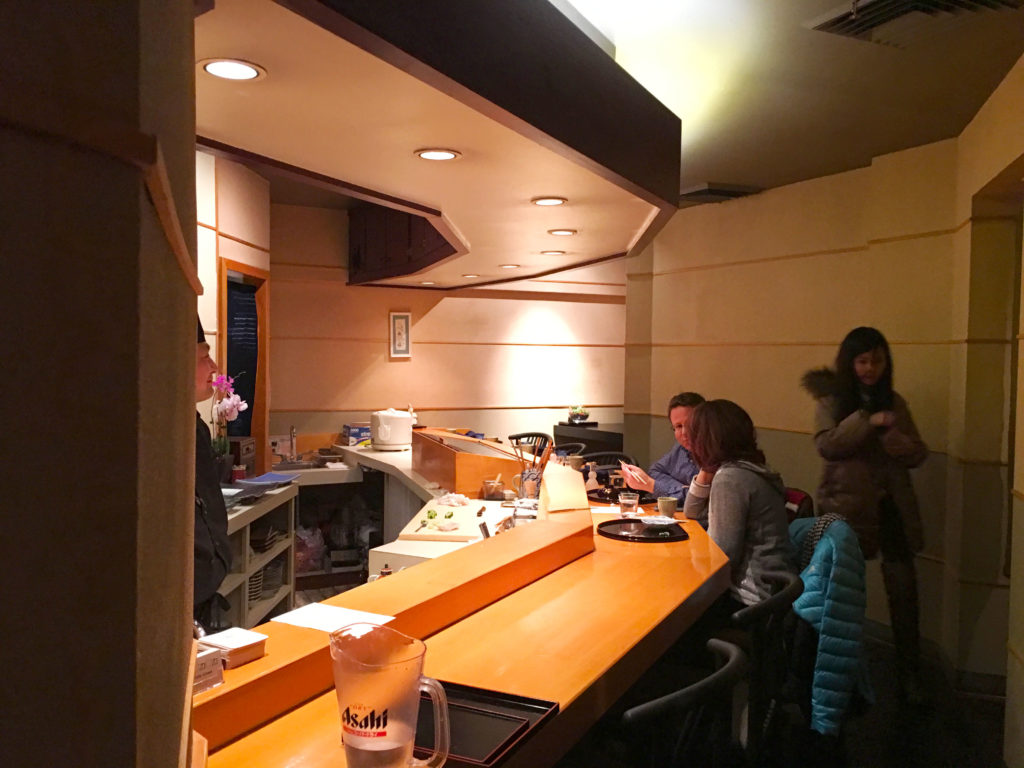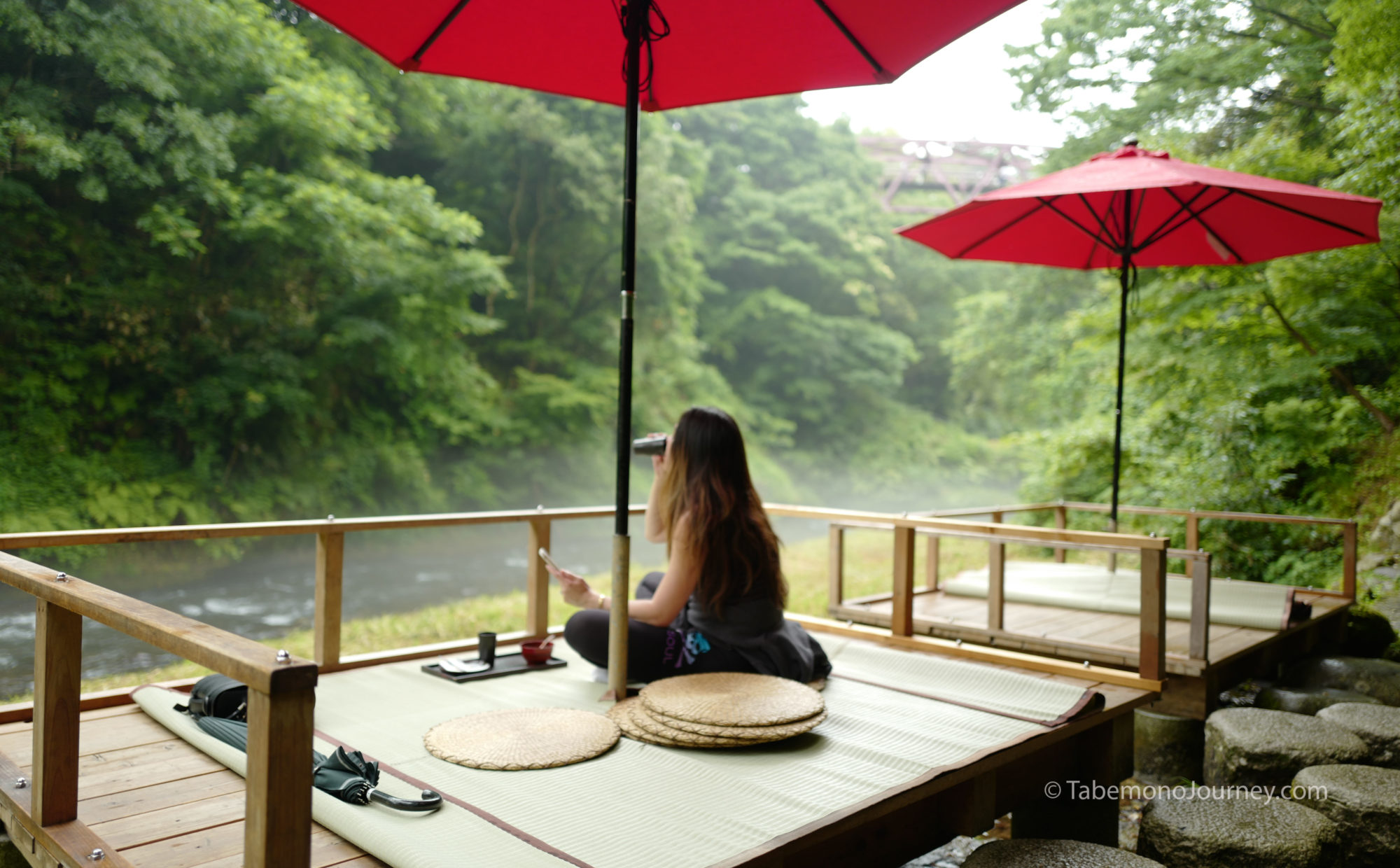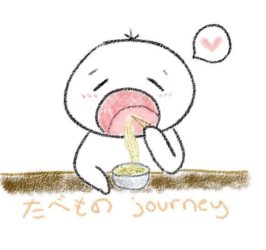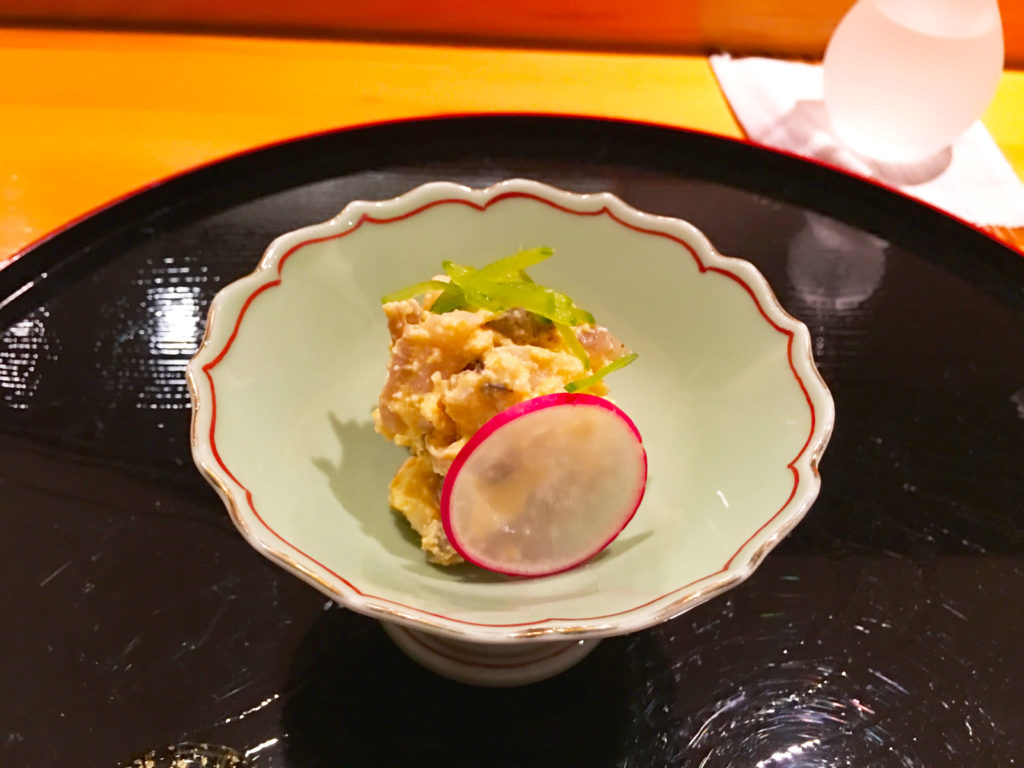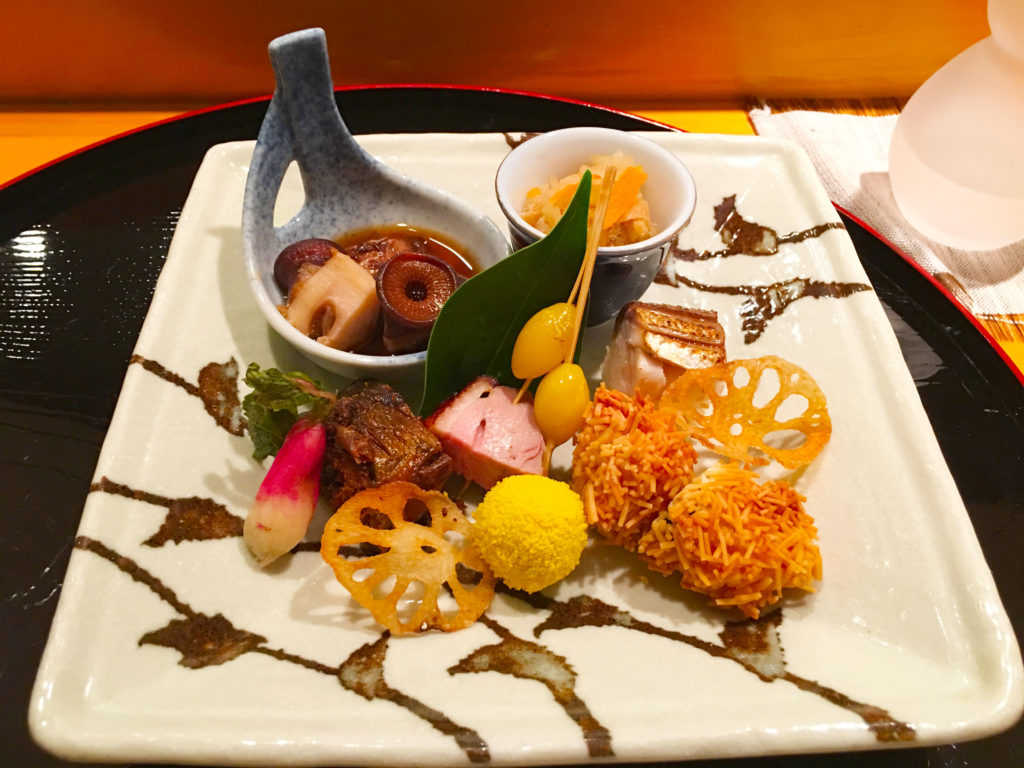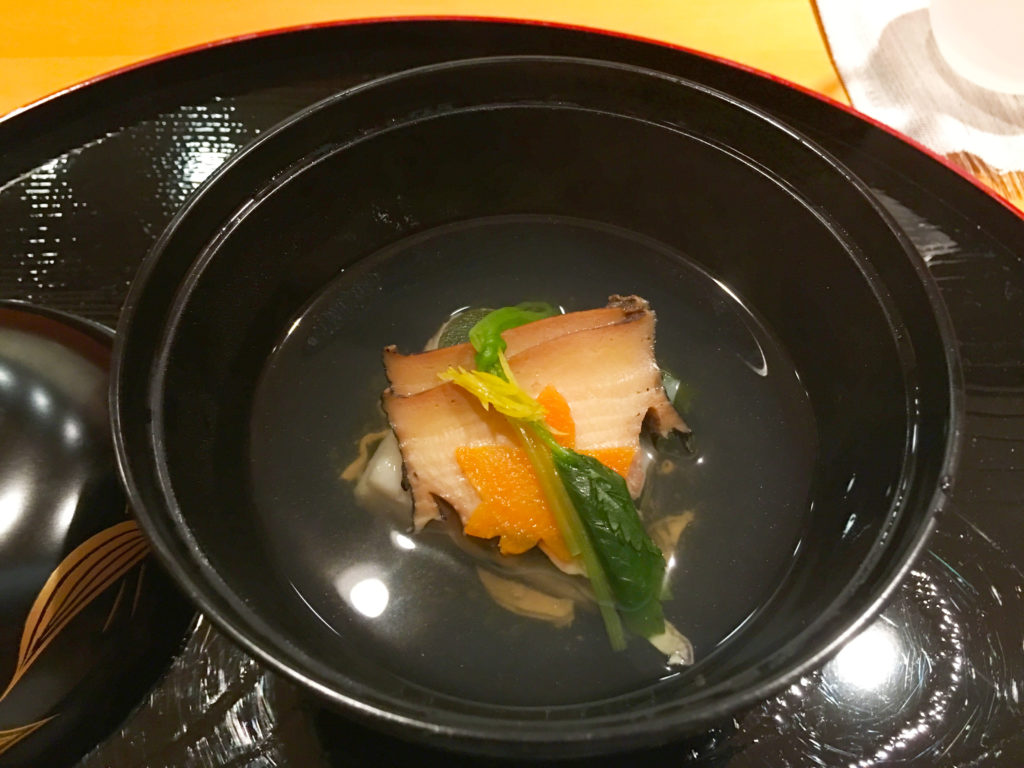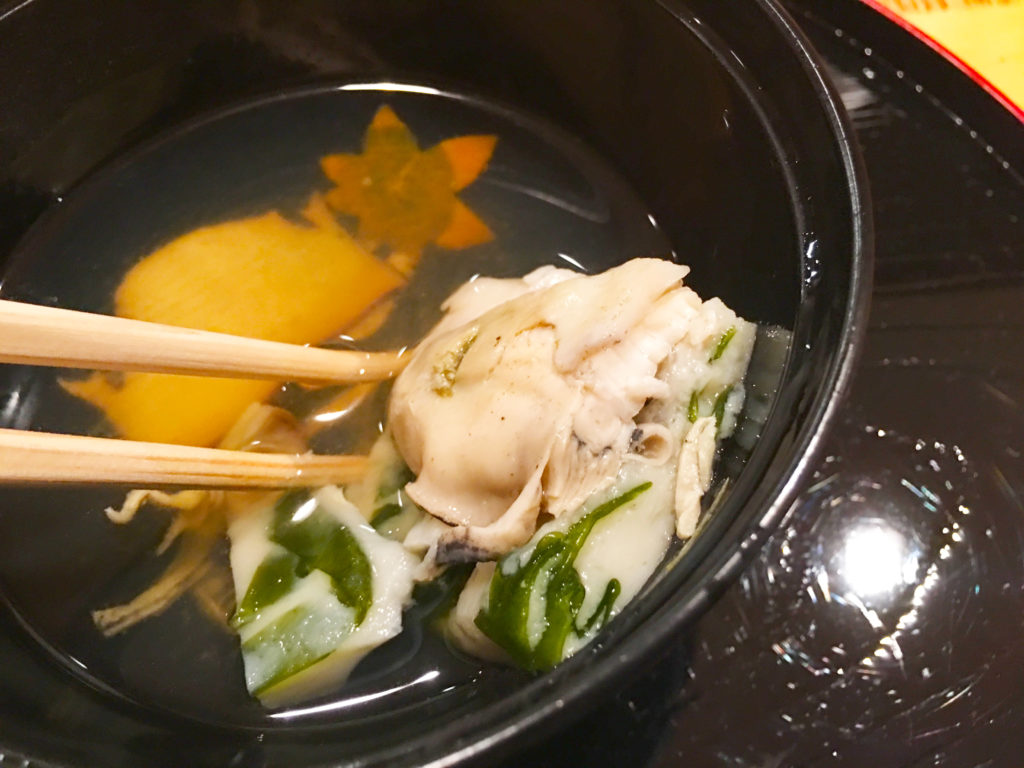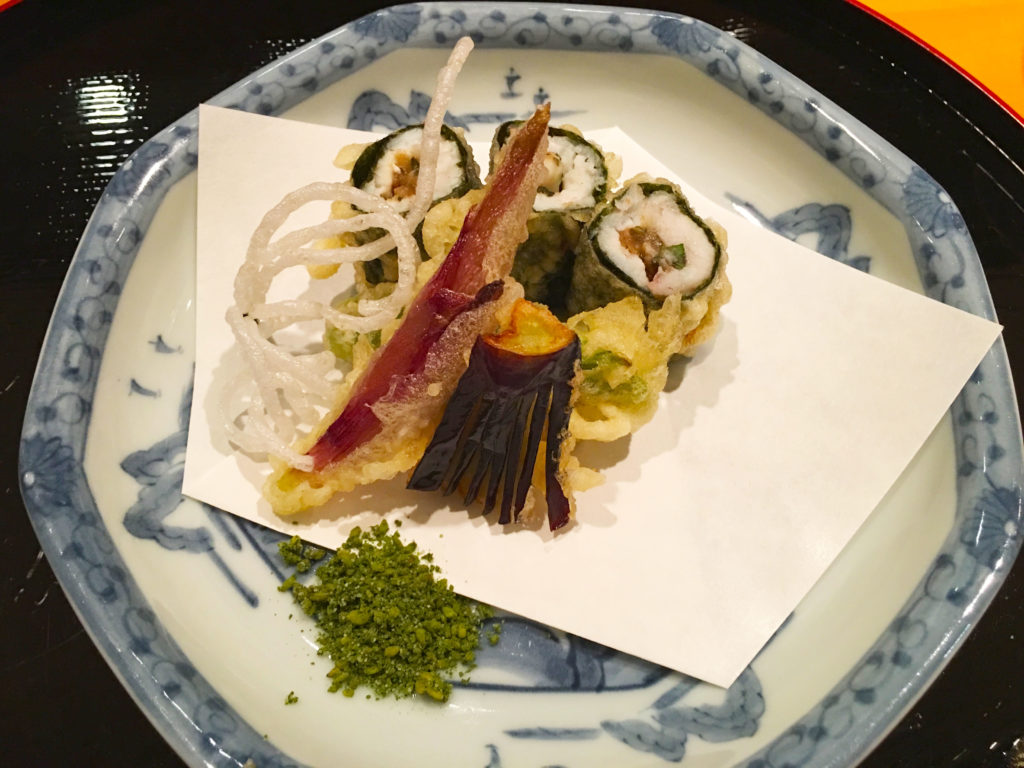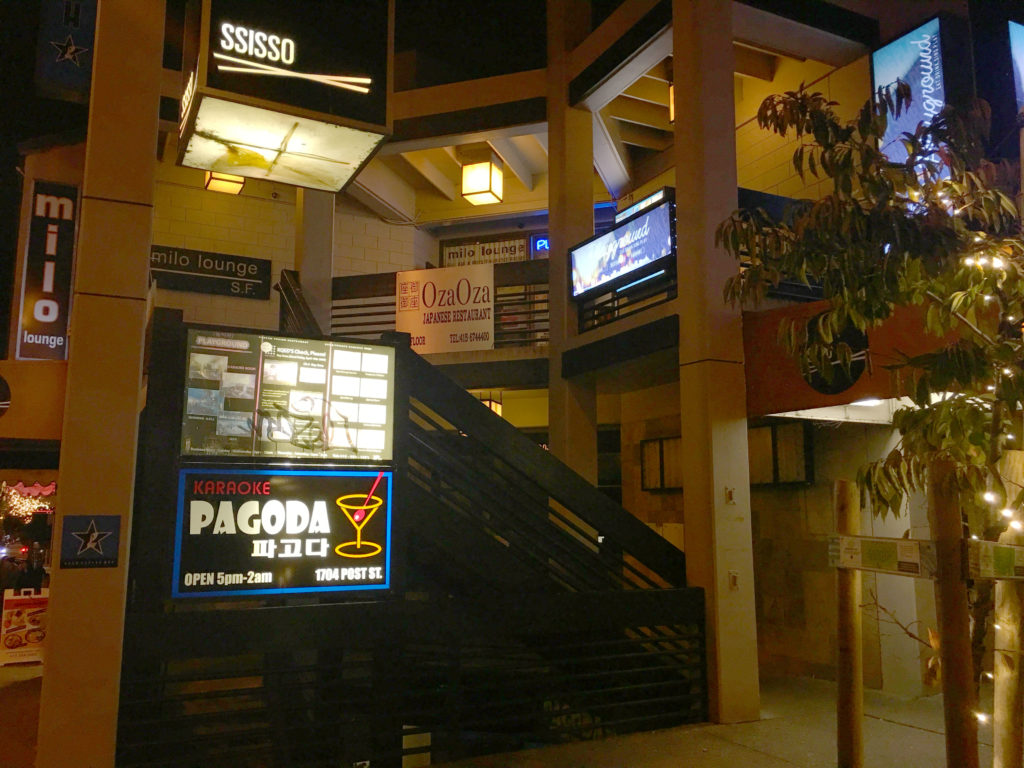
November 22, 2016
Kaiseki is a traditional multi-course Japanese dinner. It is the Japanese version of fine dining where a set menu of in-season ingredients is made into elaborate dishes and each item is presented in beautiful individual bowls and plates. I have tried kaiseki meals at numerous ryokans for dinner, at Michelin 3 star Kojyu in the Ginza area of Tokyo, and at Hashiri SF. In each of these places, dinner meals then to be quite expensive, so I was pleasantly surprised to hear that a kaiseki place opened up with an affordable price of $100/person. One concern would be that at that price, would quality suffer and you get what you pay for. After reading OzaOza’s website, it looked legitimate, especially after hearing he was originally from Kyoto, arguably the birthplace of kaiseki. We made reservations for a party of four.
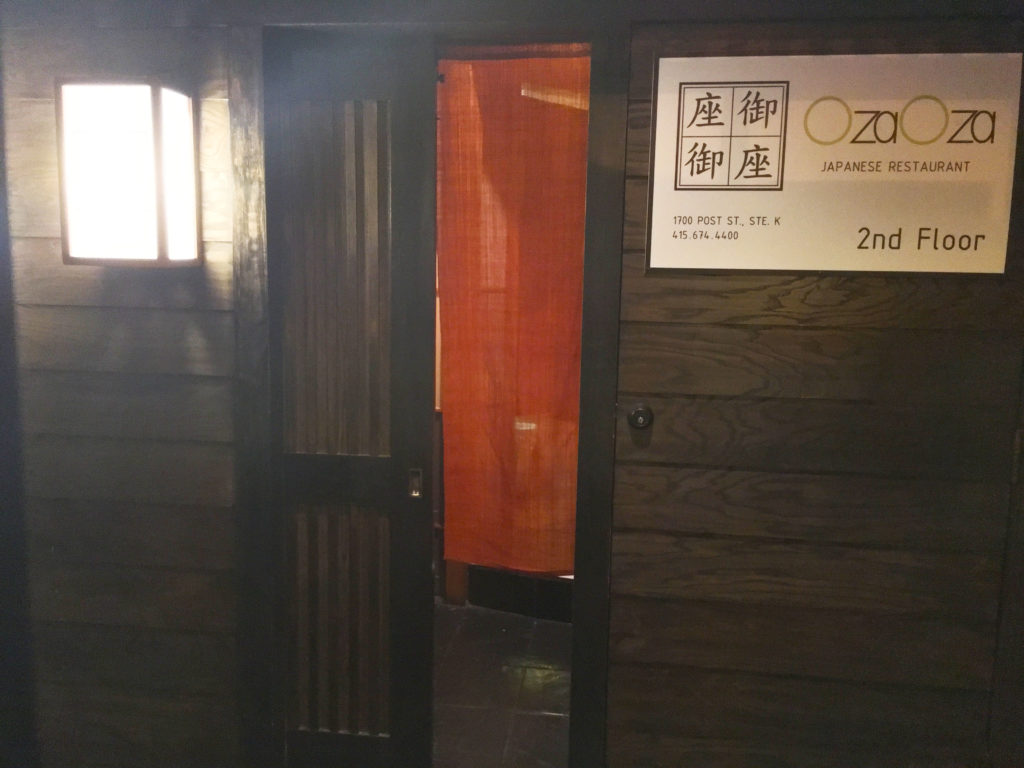
The location is actually at the prior Kappa restaurant, which use to focus on Kyo-ryori. The original husband and wife combo of Kappa retired and sold the place to OzaOza’s chef and owner Tetsuro Ozawa and his wife Gana. The hidden location, sliding wooden doors, and hanging fabric called noren gave me a nostalgic feel as if I was back in Japan and trying to find my reservation for the night. (Note that if you have been to places like Tokyo, you will know some of the restaurants are very hard to find as they can be on different floors of residential buildings or in a baseline of a building)
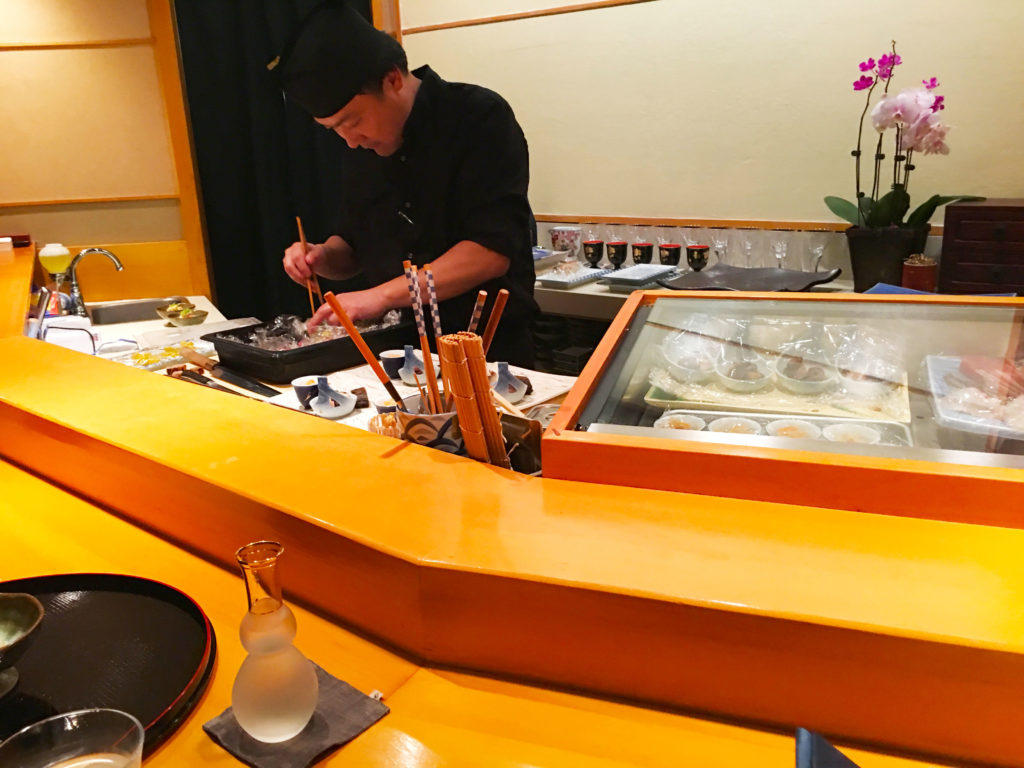
After entering and sitting down, you get an immediate sense of omotenashi, which is the Japanese way of the spirit of hospitality. Gana does a great job of making you comfortable and has an open and approachable demeanor. She shared with us that she and her husband, Chef Testuro, met and worked as Sanraku Japanese restaurant and confirmed that he was originally from Kyoto while she was from Mongolia. Sanraku really has done a great job hiring as Michelin 1 star chef and co-owner from Wako also originally came from there as well.
One key-note as dinner progressed was that Chef Tetsuro was a one man army. He sliced, cook, plated, and served in front of us all the dishes. Very impressive.
Here was the course we had throughout the night:
Sakizuke is the small appetizer course. Here we have shrimp, scallop, shimeji mushroom, konjac gel. all mixed with tofu and pumpkin. It was a nice way to start the meal.
Hassun is the seasonal appetizer course. There’s a lot going on in this dish. We have a slightly grilled iwashi (sardine) sushi, a braised ayu with roe, slow cooked octopus, ginko nuts and grilled duck skewers, deep-fried crab wrapped in somen, sweet potato and taro ball, radish marinated in miso, deep-fried renkon (lotus room), and cooked dried radish.
Everything was tasty, but the braised ayu with its roe in the middle in particular was delicious. Gana shared that it was cooked and marinated for 3 days.
Nimonowan is the soup course. We have a fish cake combined with oyster and seaweed. It is topped with abalone, carrot, mitsuba, trefoil, and sudachi rind.
I took a better view of the fish cake mixed with oyster and seaweed which was very delicate in taste and texture. This was an amazing dish. It actually came to us with the bowl covered in a lid. As you open the lid, the fragrant smell of sudachi and dashi hits your senses. My favorite course of the evening as kaiseki is famous for its use of high-grade konbu and bonito to make dashi, and this course delivers. The abalone and fish cake worked perfectly with the soup.
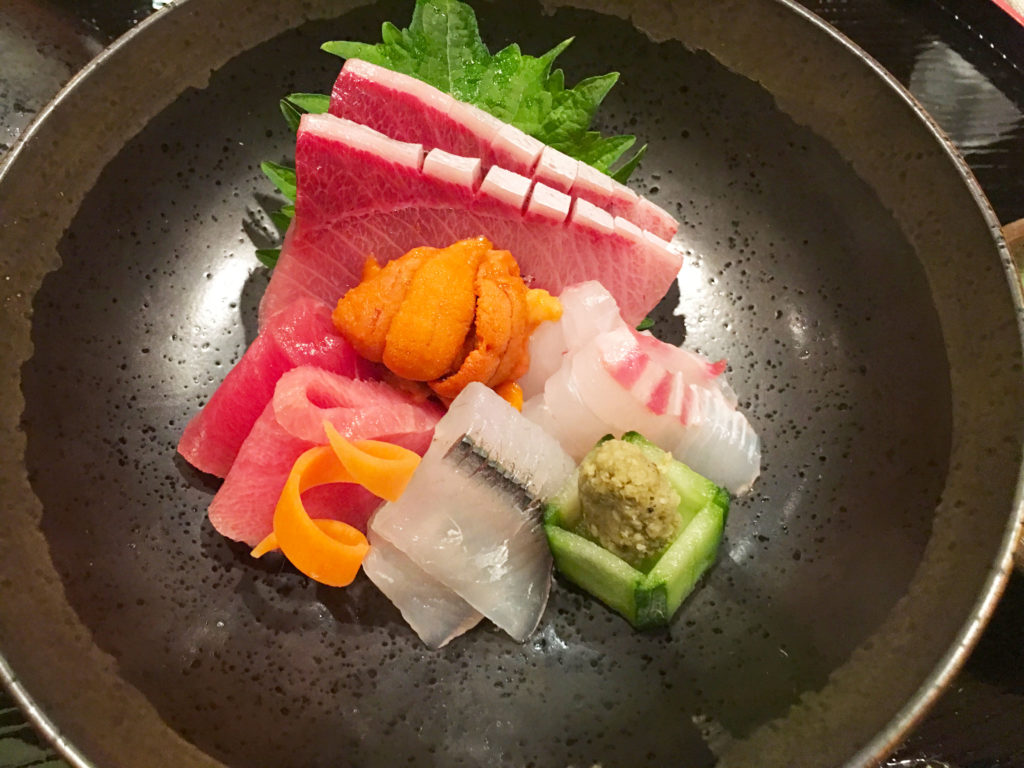 Mukouzuke is the sashimi course. Chef Tetsuro worked as a sushi chef in Sanraku and his knife skills show here. We have buri, sayori, tai, akami and chu-toro of blue fin, and bafun uni from Hokkaido. All were very tasty.
Mukouzuke is the sashimi course. Chef Tetsuro worked as a sushi chef in Sanraku and his knife skills show here. We have buri, sayori, tai, akami and chu-toro of blue fin, and bafun uni from Hokkaido. All were very tasty.
Agemono is the deep-fried dish. Here we have a red snapper rolled with mountain yam, shiso, and ume (plum paste) that is then rolled in nori and deep-fried. It is paired with other tempura such as eggplant, myoga (ginger blossom), and shishito pepper. Matcha salt was added on the side for additional flavoring. The red snapper was cooked perfectly and love the ume/shiso combo with the fish. But the tempura batter was not very crunchy as I am guessing the heat of the oil was not hot enough. Slight flaw to a good dish that could have been great but given Chef Tetsuro is a one man show, can see how timing could be off.
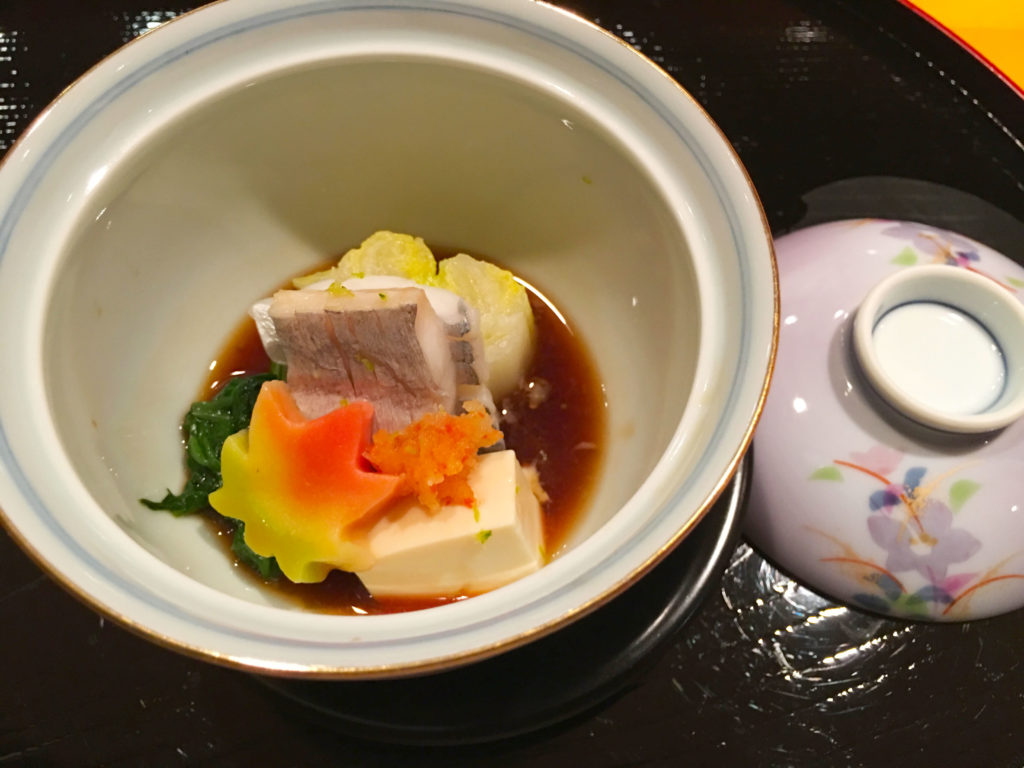 Mushimono is the steamed fish course. Here we have steamed tachiuo (beltfish) with chinese lettuce, tofu, and garland chrysanthemum. The tachiuo was perfectly steamed and was delicious. I normally have this grilled or raw, but the steamed preparation was really good as it was firm yet tender. It is not a fatty fish, so the seasoning and preparation are key for cooking this fish and this was expertly done.
Mushimono is the steamed fish course. Here we have steamed tachiuo (beltfish) with chinese lettuce, tofu, and garland chrysanthemum. The tachiuo was perfectly steamed and was delicious. I normally have this grilled or raw, but the steamed preparation was really good as it was firm yet tender. It is not a fatty fish, so the seasoning and preparation are key for cooking this fish and this was expertly done.
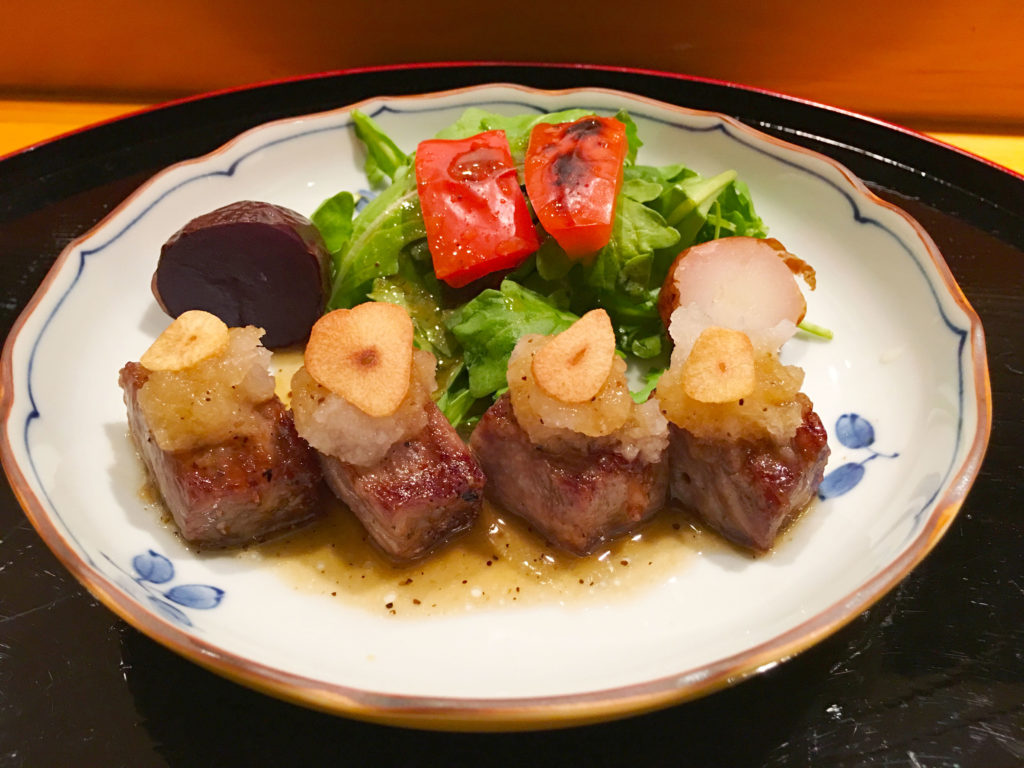 At this point, we were asked if we wanted the supplement dish which was wagyu steak at an additional $20. We all opted for this option and happy we did. You get four pieces of A5 Satsuma wagyu. It was topped with grated daikon and a fried garlic chip. Arugula salad, grilled red pepper, and potatoes finished the plate. I love the grated daikon and garlic and ponzu sauce as it helped to cut the fattiness of the beef. We were all happy to have opt in on this dish as it was cooked perfectly and delicious.
At this point, we were asked if we wanted the supplement dish which was wagyu steak at an additional $20. We all opted for this option and happy we did. You get four pieces of A5 Satsuma wagyu. It was topped with grated daikon and a fried garlic chip. Arugula salad, grilled red pepper, and potatoes finished the plate. I love the grated daikon and garlic and ponzu sauce as it helped to cut the fattiness of the beef. We were all happy to have opt in on this dish as it was cooked perfectly and delicious.
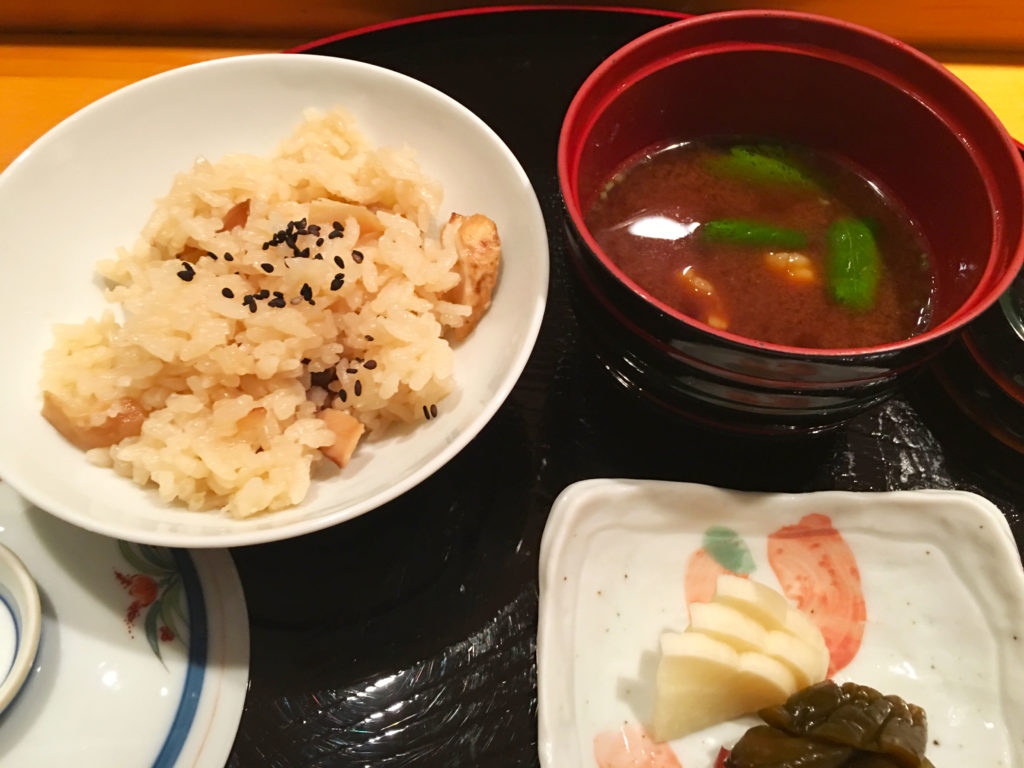 Osoyokuji is the rice, miso soup, and tsukemono(pickles) course. It is the last main dish we have before dessert. Matsutake gohan, red miso with sake kasu (lees left over from sake production), and pickles are always a traditional way to wrap up a Japanese feel.
Osoyokuji is the rice, miso soup, and tsukemono(pickles) course. It is the last main dish we have before dessert. Matsutake gohan, red miso with sake kasu (lees left over from sake production), and pickles are always a traditional way to wrap up a Japanese feel.
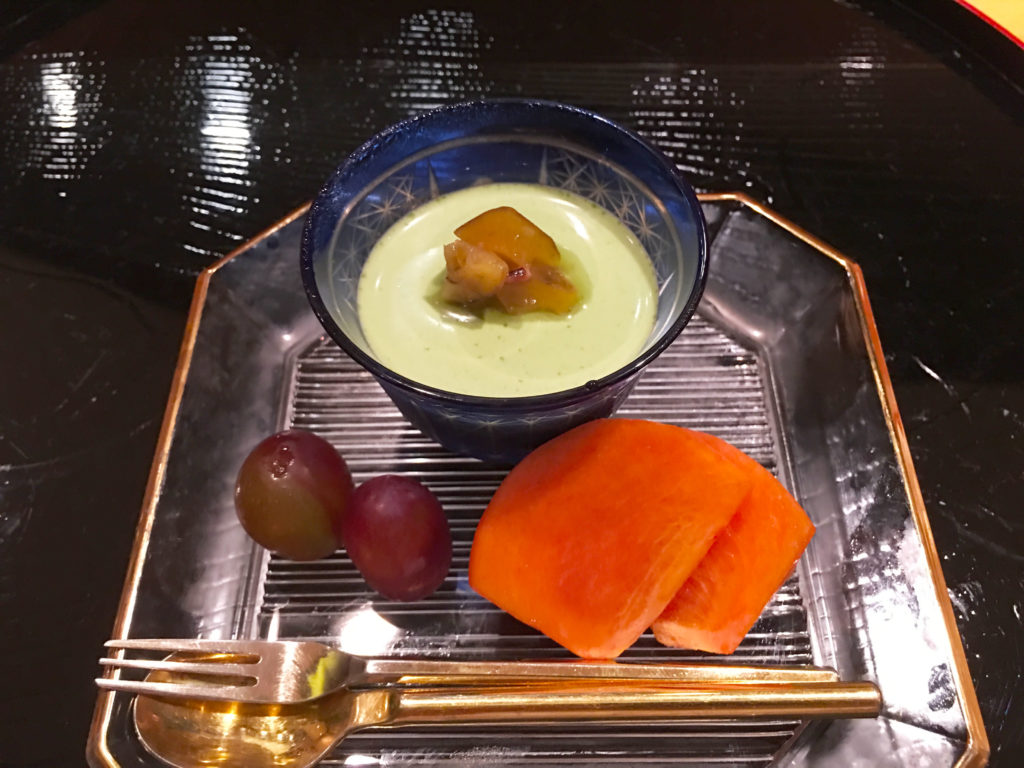 Dessert was matcha pudding with red beans at the bottom. You have grapes and persimmon to finish off the dessert. I liked the dessert as the matcha pudding and red bean was not too sweet.
Dessert was matcha pudding with red beans at the bottom. You have grapes and persimmon to finish off the dessert. I liked the dessert as the matcha pudding and red bean was not too sweet.
Overall, I highly recommend OzaOza for their kaiseki meal, and it is at an amazingly affordable price at $120/person (with the wagyu supplement). It gives one of the few very authentic Japanese experience in Japantown of San Francisco. Gana shared that the menu will change monthly, so I look forward to coming back.
Note, it is a small place that seats 9 and is reservations only. The below picture is pretty much the whole dining area as it is counter only.
